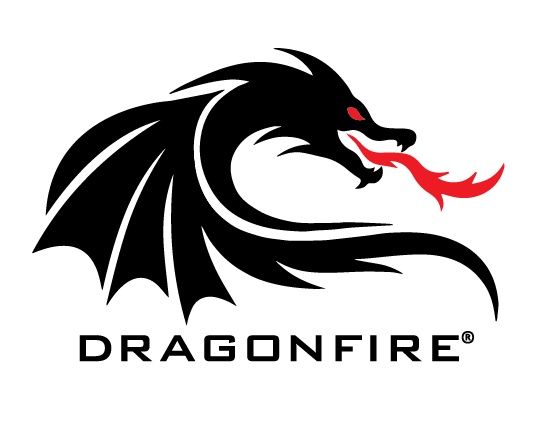1. Selecting and Integrating Data Sources for Personalization in Customer Onboarding
a) Identifying Relevant Internal and External Data Sources
To build a robust personalization engine, start by systematically cataloging all available data sources. Internal sources include Customer Relationship Management (CRM) systems, transactional databases, support ticket logs, and product usage analytics. External sources encompass third-party demographic data providers, social media activity, and behavioral analytics platforms like Mixpanel or Amplitude. Prioritize data streams that directly influence customer preferences, behaviors, and engagement patterns.
b) Establishing Secure Data Collection and Ingestion Pipelines
Implement RESTful APIs to facilitate real-time data transfer from sources to your data warehouse. Use secure protocols such as HTTPS and OAuth 2.0 for authentication. Set up ETL (Extract, Transform, Load) pipelines with tools like Apache NiFi, Talend, or Airflow to automate data ingestion, cleaning, and normalization. For instance, configure API endpoints in your CRM (like Salesforce) to push customer updates into your warehouse, ensuring data is refreshed every 15 minutes for near real-time responsiveness.
c) Ensuring Data Quality and Consistency
Use data validation frameworks such as Great Expectations or custom validation scripts to detect anomalies, missing values, or inconsistencies during ingestion. Establish standard data schemas and enforce strict data types to prevent schema drift. Regularly audit data freshness and accuracy—consider implementing checksum validation or version control for critical datasets. For example, verify that demographic data matches known constraints (e.g., age ranges, valid email formats) before integrating into customer profiles.
d) Practical Example: Step-by-Step Setup of a Data Integration Pipeline
| Step | Action | Details |
|---|---|---|
| 1 | Connect CRM API | Use OAuth 2.0 credentials to authenticate with Salesforce API and pull customer contact info every 10 minutes. |
| 2 | Normalize Data | Standardize fields like ‘customer_status’ (e.g., ‘new’, ‘active’) and ensure consistent date formats. |
| 3 | Load into Data Warehouse | Use an ETL tool like Apache NiFi to load cleaned data into Snowflake or BigQuery, scheduled every 15 minutes. |
| 4 | Data Validation | Run validation scripts post-load to flag anomalies, e.g., missing email addresses or invalid phone numbers. |
2. Building Customer Profiles: Techniques and Best Practices
a) Defining Key Attributes for Onboarding Personalization
Identify attributes that influence onboarding fit and engagement, including demographic data (age, location, industry), behavioral signals (feature usage, session duration), and explicit preferences (product interests, communication channels). Use a modular schema that allows adding new fields as your customer base evolves. For example, include a ‘preferred onboarding language’ attribute to localize content effectively.
b) Implementing Real-Time Data Processing for Dynamic Profile Updates
Utilize event-driven architectures with message brokers like Kafka or RabbitMQ to capture user actions instantly. Process these events with stream processing frameworks such as Apache Flink or Spark Streaming to update customer profiles in real time. For instance, if a user completes a tutorial step, immediately update their profile to reflect increased engagement level, enabling subsequent personalized content adjustments.
c) Handling Data Privacy and Compliance during Profile Creation
Implement consent management platforms (CMP) to track user permissions explicitly. During profile creation, ensure data collection forms clearly specify how data will be used, providing opt-in options for personalized marketing. Use encryption at rest and in transit, and anonymize sensitive data where feasible. Regularly review compliance with GDPR, CCPA, and other relevant regulations, updating policies and user controls accordingly.
d) Case Study: Developing Comprehensive Customer Profiles for SaaS Onboarding
A SaaS provider integrated data from their CRM, user activity logs, and third-party firmographics to build detailed profiles. They employed a layered approach: first capturing static demographics, then enriching profiles with behavioral signals via Kafka streams. They used a decision tree classifier to assign new users to segments like ‘power users,’ ‘potential churners,’ or ‘newcomers.’ Profiles were updated dynamically during onboarding, enabling tailored tutorials, feature prompts, and messaging sequences. This approach increased onboarding completion rates by 18% and reduced time to first value by 25%.
3. Designing and Deploying Personalization Algorithms
a) Choosing Appropriate Machine Learning Models
Select models aligned with your data structure and personalization goals. Clustering algorithms like K-Means or DBSCAN are effective for segmenting users based on feature vectors (e.g., usage frequency, demographic info). Decision trees or random forests serve well for rule-based personalization, such as recommending onboarding steps. Collaborative filtering, using matrix factorization or nearest neighbor algorithms, helps suggest features based on similar user profiles. For example, segment users into clusters to deliver tailored onboarding content.
b) Training Models on Onboarding Data
Prepare datasets with labeled features—demographics, engagement metrics, preferences—and split into training and validation sets (80/20 split). Use scikit-learn or TensorFlow for model training. For clustering, normalize features with Min-Max scaling to ensure equal weighting. Use silhouette scores to determine the optimal number of clusters. For example, run K-Means with k=3 to identify distinct onboarding user segments, then analyze cluster centers for content tailoring.
c) Integrating Algorithms into the Onboarding Platform
Deploy models as REST API microservices using frameworks like Flask or FastAPI. Containerize with Docker and orchestrate via Kubernetes for scalability. During onboarding, send user profile data to the API, receive segment labels or recommendations, and adjust the flow dynamically. For example, a user identified as a ‘power user’ might see advanced tutorials first, while a ‘newcomer’ might get a simplified walkthrough.
d) Practical Example: Using Clustering to Tailor Onboarding Content
Suppose you have segmented users into three clusters: ‘quick adopters,’ ‘passive users,’ and ‘struggling onboarding.’ For each, design specific onboarding pathways. Implement a pipeline where, upon user registration, profile data is sent to your clustering API. Based on the cluster label returned, dynamically load the corresponding onboarding sequence—e.g., immersive tutorials for quick adopters, simplified guides for passive users, and troubleshooting tips for struggling users. Continuously evaluate cluster stability and adjust features or the number of clusters to improve segmentation accuracy.
4. Creating Personalized Content and Experiences Based on Data Insights
a) Developing Dynamic Onboarding Flows
Leverage customer profile attributes and segmentation results to build modular onboarding components. Use conditional rendering logic within your front-end frameworks (React, Vue) to present relevant tutorials, UI elements, or prompts. For example, if a user prefers video tutorials, prioritize visual guides; if they are a technical user, provide API documentation first. Use feature flags and A/B testing frameworks like Optimizely or LaunchDarkly to test different flow variations systematically.
b) Automating Content Customization
Implement personalization engines that dynamically generate emails, tutorials, and UI messages. Use templating engines like Liquid or Handlebars, injecting profile data and segmentation tags. For instance, send onboarding emails with content tailored to the user’s industry or role, e.g., ‘Getting Started for Marketers’ versus ‘Developer Onboarding.’ Connect your email platform (e.g., SendGrid) with your CRM to automate triggered sequences based on user actions.
c) Testing and Optimizing Personalization Strategies
Use A/B testing to compare different onboarding flows or content variants. Define key metrics like click-through rates, completion rates, and time to first value. Employ multivariate testing when combining multiple personalization tactics. Analyze results using statistical significance testing (chi-square, t-tests) to identify winning strategies. Regularly refresh your content pools and segmentation criteria based on ongoing performance data.
d) Example: Personalized Onboarding Checklist for User Segments
Imagine creating three onboarding checklists tailored to user segments:
- Power Users: Advanced feature setup, customization options, integration tutorials.
- Passive Users: Basic feature walkthrough, onboarding videos, engagement prompts.
- Struggling Users: Troubleshooting guides, live chat options, simplified onboarding steps.
Implement these dynamically by linking profile segment data to your onboarding UI components, ensuring each user experiences a flow optimized for their profile.
5. Implementing Real-Time Personalization Triggers and Feedback Loops
a) Setting Up Event Tracking to Trigger Personalized Interactions
Utilize event tracking tools like Segment or Mixpanel to capture granular user actions—clicks, page views, feature usage. Define custom events such as ‘Completed Tutorial Step’ or ‘Engaged with Onboarding Email.’ Use these events to trigger personalized messages or flow adjustments via webhook integrations. For example, if a user abandons onboarding midway, send targeted retargeting emails or offer live assistance.
b) Using Real-Time Analytics to Adjust Onboarding Flows
Implement dashboards with real-time data visualization tools like Tableau or Power BI connected to your analytics streams. Monitor engagement metrics as users progress through onboarding. If a segment shows high drop-off at a specific step, dynamically modify subsequent interactions—e.g., introduce additional guidance or simplify steps. Use feature flags to toggle between different flow variations for testing.
c) Collecting User Feedback to Refine Algorithms
Embed feedback prompts within onboarding flows—such as quick surveys or star ratings—to gather qualitative insights. Use this data to identify pain points and update your segmentation or personalization models accordingly. For example, if many users rate a specific step as confusing, prioritize redesign or content clarification for that segment.
d) Case Example: Real-Time Adaptation Based on Engagement Signals
A platform tracks user engagement signals such as time spent on onboarding pages and feature interactions. When a user spends more than twice the average time on a step without completing it, the system triggers an intervention: pausing the current flow and presenting a live chat offer or additional tutorial. This adaptive approach reduces frustration and increases completion rates. Regularly review these triggers to refine your rules, ensuring they respond appropriately to evolving user behaviors.










